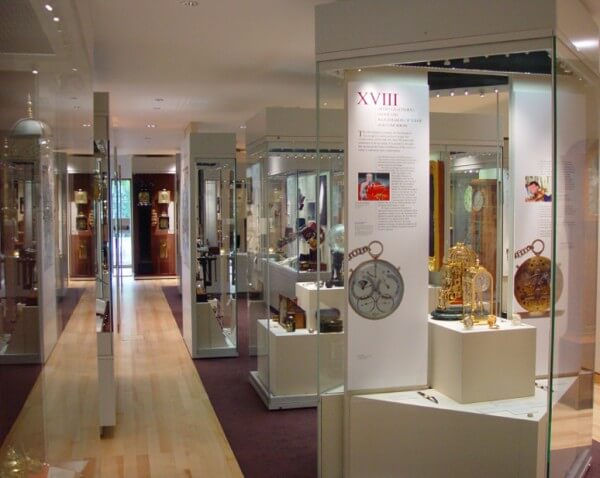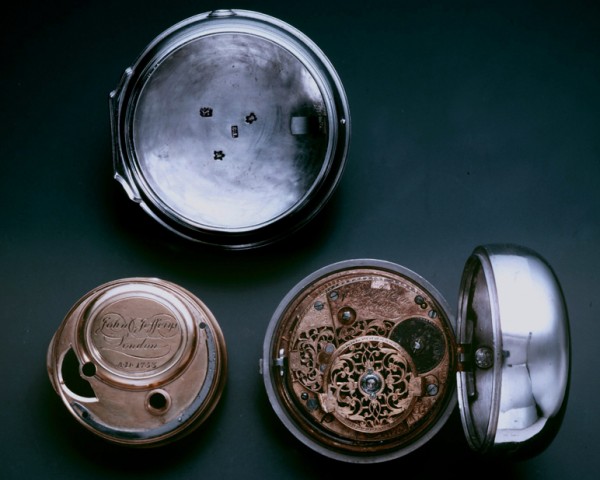The Worshipful Company of Clockmakers was founded under a Royal Charter of King Charles I in 1631, and is today known as a City Livery Company. All such Livery Companies (originally Craft Guilds), of which there are now over 100, have to have their headquarters, often within their own Guildhall, within the City of London, today’s financial ‘square mile’.
At that time, no one was allowed to make, sell or buy a watch or clock, or indeed any of their parts, inside the boundaries of the City of London, unless they first became a Freeman of the Company. This status could only be achieved via apprenticeship to a Free Clockmaker, or redemption (which means purchase), or by patrimony (the right of a child to follow a Freeman parent into the Company). Tough rules, but they did guarantee, and still do today, that a great majority of the Company’s members are actively involved in some aspect of the trade.
The Clockmakers’ Company therefore provides a valuable forum for those interested in any branch of horology, be it antiquarian or modern. At all times it seeks to promote excellence in the trade, and to provide education and training through its many charities and its close links with the British Horological Institute.

A Library founded in 1813
The Worshipful Company of Clockmakers is the oldest surviving horological institution in the world, and it can be proud of the fact that it also possesses a Museum which holds the oldest collection of clocks, watches and sundials to be found anywhere in the world.
The above account puts into context this ‘visit’ to the Museum. Each year the Company elects a new Master, a kind of chairman, who presides over a Court of Assistants which has elected him (and recently a first ‘her’). I now list some of these together with their years of office, for two good reasons. Firstly, it includes a roll call of dial names of interest to anyone in horology, and secondly, very many of them have examples of their work in the Museum. So, here it is:
| • David Ramsey (1631, the first Master) | • Benjamin Sydey (1762, 1789) |
| • Edward East (1645, 1652) | • Paul Philip Barraud (1811, 1812) |
| • Charles Gretton (1701) | • Benjamin Lewis Vulliamy (1822, 1824, 1825, 1828, 1848) |
| • Joseph Windmills (1702) | • Edward Ellicott (1835, 1836) |
| • Thomas Tompion (1704) | • William James Frodsham (1837, 1838) |
| • Robert Webster (1705) | • Charles Frodsham (1856, 1863) |
| • Daniel Quare (1708) | • the Rev. Henry Leonard Nelthropp (1893, 1894) |
| • James Markwick (1720) | • William Hamilton Shortt [SIC] (1950) |
| • George Graham (1722) | • Cecil Clutton (1973) |
| • Francis Perigal (1756, 1775) | • George Daniels (1980) |
Its Library was founded in 1813, and installed in 1925 within the Guildhall Library in the heart of the City, where today its fascinating collection of books and manuscripts can be freely viewed. The latter, for example include 18th century manuscripts in the hand of John Harrison, and the records of Victor Kullberg. These two clock and watch makers are key figures in the story of British horology, but just two of many, such as Nicole Nielsen, who were never members of the Clockmakers’ Company. Indeed it is very difficult to imagine Yorkshireman John Harrison behaving himself at one of its grand, formal Dinners!

London’s best ‘undiscovered secrets?
The Company’s clock and watch collection was founded a year later, in 1814, and one of its most important exhibits today, the one visitors seek out most frequently, is Harrison’s H5, his fifth marine chronometer, completed in 1770. It is housed in the Collection’s single large room, which was superbly redesigned in 2002, complete with scholarly descriptive labels for each exhibit, written by its Consultant Keeper, Sir George White. His 1998 booklet The Clockmakers of London is an essential companion for those visitors who can, without charge, enjoy all the masterpieces.
At any one time there are about 600 English and European watches, 30 clocks and 15 marine chronometers, and also rare portraits of horological luminaries on display. They are set up in chronological order, right up to work by contemporary English makers such as George Daniels, David Poole, Roger Smith, Ron Rose, Joanna Migdal (sundials), and Mike Barber. Sir George is particularly excited by a table regulator, a recent loan from its private collector, by the young Ian Ford.
Of the few wristwatches in the Museum, the one that always attracts attention is that of Edmund Hillary, who wore it during his successful ascent, the very first, of Mount Everest on 29th May 1953. It was a simple stainless steel, waterproof piece made by Smiths English Clocks Ltd. earlier that year. Over 20,000 visitors to the Clockmakers’ Museum are expected in 2009, and Sir George White has just made an interesting discovery. ‘I have been checking through the visitors’ book for the first six months of this year, and find that they came from no less than 45 different countries!’ His Museum used to be known as one of the City of London’s best ‘undiscovered secrets’. Not any longer.
















